Table of Contents
Cerebral palsy (CP) is a condition that affects movement, muscle tone, and posture. While there is no cure for CP, physiotherapy plays a vital role in helping children improve their motor skills, enhance mobility, and increase their independence. This article will explore a variety of physiotherapy exercises tailored to children with CP, focusing on improving strength, flexibility, and overall physical function.
Understanding Cerebral Palsy in Children
What Is Cerebral Palsy?
Cerebral palsy is a neurological disorder caused by abnormal brain development or damage to the brain, typically occurring before birth or during early childhood. The condition affects movement, muscle tone, and coordination, with symptoms ranging from mild to severe.
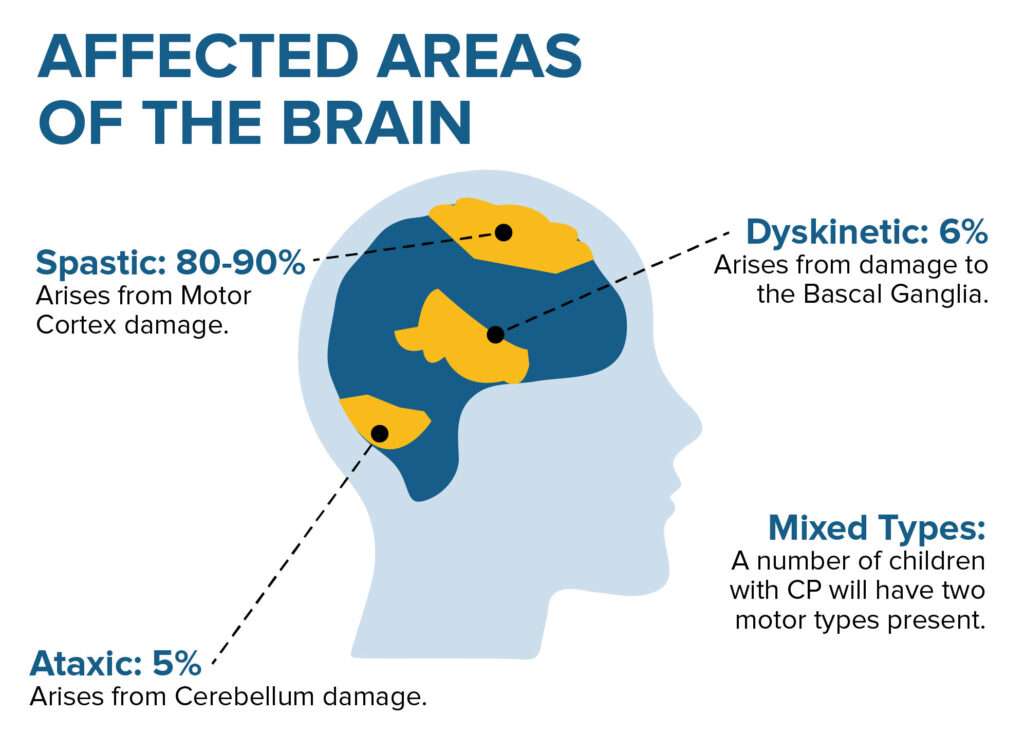
There are four main types of cerebral palsy:
- Spastic Cerebral Palsy: The most common type, where muscles are stiff, leading to jerky or awkward movements.
- Dyskinetic Cerebral Palsy: Characterized by uncontrollable, involuntary movements.
- Ataxic Cerebral Palsy: This type affects balance, depth perception, and causes shaky or unsteady movements.
- Mixed Cerebral Palsy: A combination of symptoms from two or more types of cerebral palsy.
Which areas of the body are impacted by cerebral palsy?
Spastic cerebral palsy can impact various parts of the body in different ways:
- Quadriplegia: All four limbs (both arms and legs) are equally paralyzed or weakened.
- Diplegia/Bilateral: Primarily affects both legs, and sometimes the arms to a lesser degree.
- Hemiplegia/Unilateral: Only one side of the body (one arm and one leg) is affected.
- Double Hemiplegia: Both arms are more severely affected than the legs, though this is less common.
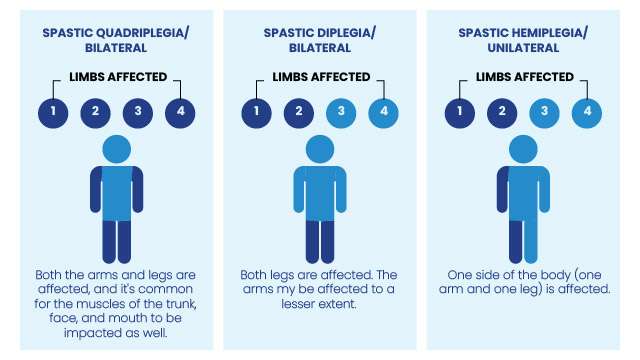
Importance of Early Intervention
Early intervention, particularly physiotherapy, can help children with CP improve their motor skills and reduce the impact of physical disabilities. Physiotherapy is most effective when started early in the child’s development.
Benefits of Physiotherapy for CP
Physiotherapy helps children with CP by:
- Improving muscle strength and coordination
- Enhancing flexibility and posture
- Reducing the risk of joint deformities
- Promoting independence in daily activities

Role of Parents in CP Management
Parents play an important role in their child’s progress. Providing emotional support, ensuring regular therapy sessions, and encouraging consistent exercise at home are crucial elements in a CP child’s rehabilitation journey.
Physiotherapy for Cerebral Palsy
Why Is Physiotherapy Important for CP Children?
Physiotherapy helps children with cerebral palsy develop muscle strength, improve flexibility, enhance posture, and increase mobility. It can also help manage pain and prevent joint deformities, enabling children to participate more fully in everyday activities.
Different Types of Physiotherapy for CP Child
- Occupational Therapy: Focuses on improving fine motor skills and helping children perform daily tasks like dressing and feeding.
- Speech Therapy: Helps children with CP who have difficulty speaking or swallowing, improving their communication and oral motor skills.
- Physical Therapy: The core therapy for children with CP, focusing on improving gross motor skills, posture, and muscle tone.

Top Physiotherapy Exercises for CP Children
Stretching Exercises
Stretching is essential for improving flexibility and reducing muscle tightness, which is common in children with CP.
Hamstring Stretch
The hamstring stretch helps lengthen the muscles at the back of the thigh, improving flexibility in the legs. To perform this stretch, have your child lie on their back and gently lift one leg upward, keeping the knee slightly bent. Hold the position for 20-30 seconds before switching legs.

Quadriceps Stretch
Quadriceps stretches target the muscles at the front of the thigh. This exercise can be done with the child standing or lying down. Gently bend one leg toward the back, bringing the heel toward the buttock, and hold for 20-30 seconds.

Strengthening Exercises
Strengthening exercises are vital for improving muscle tone and coordination in children with CP.
Core Strengthening with Stability Ball
Using a stability ball can strengthen your child’s core muscles. Have your child sit on the ball with their feet flat on the floor. Encourage them to maintain balance by engaging their abdominal muscles. This improves core strength and stability.

Leg Strengthening with Resistance Bands
Resistance bands are great for strengthening leg muscles. Have your child sit on the floor with legs extended. Loop the band around their feet and gently pull on the band as they push against the resistance.

Balance and Coordination Exercises
Balance exercises help CP children improve their stability and prevent falls.
Standing on One Leg
Balance exercises like standing on one leg can help improve stability and coordination. Encourage your child to stand on one leg for as long as possible, using a wall or a chair for support if needed.

Walking on a Line
Walking on a straight line, like a balance beam, helps improve coordination. This can be done at home by placing a piece of tape on the floor and having your child walk heel-to-toe along the line.

Mobility and Flexibility Exercises
Assisted Walking
Assisted walking exercises are great for improving mobility. Use a walker or hold your child’s hands to help them practice walking with proper posture and gait.
Range of Motion Exercises
Range of motion exercises involve gently moving the child’s arms, legs, and joints through their full range of motion. This helps maintain joint flexibility and reduces stiffness.

Leg Cycling
This exercise can be performed on a stationary bike or with a manual cycling device. It helps improve leg mobility and coordination while enhancing cardiovascular health.

Additional Physiotherapy Exercises for CP Children
Arm Cycling
Arm cycling can be done using a specialized machine that allows the child to pedal with their arms. This strengthens upper body muscles and improves cardiovascular fitness.

Chair Aerobics
Combining upper body movements with cardio, chair aerobics helps CP children develop muscle tone while enhancing heart health, especially when mobility is limited.
Dancing
Dancing is a fun way for children to improve coordination and flexibility while enjoying physical activity.
Jogging
Light jogging, whether assisted or independent, is an excellent cardio exercise that improves endurance, muscle strength, and joint mobility.
Rowing
Rowing can be done with a machine or through assisted movements to build upper body strength and coordination.
Stair Climbing
Stair climbing exercises strengthen leg muscles and improve cardiovascular health. It can be done with assistance to ensure safety.
Weight Training
Weight training, using light dumbbells or resistance bands, helps build muscle strength in both the upper and lower body.
Yoga and Tai Chi
These mind-body practices help improve flexibility, muscle tone, and relaxation. Yoga and Tai Chi also enhance balance, breathing control, and mental focus, which are particularly beneficial for children with CP.
How to Perform These Exercises Safely at Home
Tips for Parents to Assist
Parents should supervise their child’s exercises to ensure they are performed correctly and safely. Start with gentle movements and gradually increase the intensity as the child builds strength.
Best Practices for Safe Exercise at Home
- Ensure a safe, clutter-free environment.
- Use soft surfaces, like yoga mats, to prevent injury.
- Make exercises fun by turning them into games or using music to keep children engaged.
- Always consult a physiotherapist before introducing new exercises.
When to Seek Professional Help
If your child experiences pain, discomfort, or unusual fatigue during exercises, it’s important to stop immediately and consult with a healthcare professional. A physiotherapist can help adjust the routine and offer professional guidance.
Conclusion
Physiotherapy exercises are an essential component of managing cerebral palsy in children. By incorporating a mix of stretching, strengthening, mobility, and coordination exercises, CP children can enhance their motor function and improve their overall quality of life. Consistency and support from parents are key to making these exercises effective, and early intervention can make a significant difference in a child’s physical development.
FAQs (Frequently Ask Questions)
Can cerebral palsy improve with therapy?
Yes, while cerebral palsy cannot be cured, regular physiotherapy can significantly improve a child’s motor skills, muscle tone, and overall mobility, leading to better physical function and independence.
How often should CP children do physiotherapy?
The frequency of physiotherapy varies depending on the severity of the child’s condition, but most CP children benefit from therapy sessions several times a week. It’s essential to follow the recommendations of a physiotherapist.
What equipment is needed for CP exercises at home?
For CP exercises at home, you may need stability balls, resistance bands, light weights, a yoga mat, and potentially a stationary bike or arm cycling machine for cardio exercises.
Are there risks involved with physiotherapy for CP?
Physiotherapy is generally safe when supervised by a professional, but incorrect technique or overexertion can cause strain or discomfort. It’s important to follow a tailored plan created by a physiotherapist to avoid these risks.
How can I motivate my child to engage in exercises?
Make the exercises fun and engaging by incorporating games, music, or even setting small rewards for completing certain tasks. Positive reinforcement and keeping a routine can also help maintain motivation.
Yes, while cerebral palsy cannot be cured, regular physiotherapy can significantly improve a child’s motor skills, muscle tone, and overall mobility, leading to better physical function and independence.
The frequency of physiotherapy varies depending on the severity of the child’s condition, but most CP children benefit from therapy sessions several times a week. It’s essential to follow the recommendations of a physiotherapist.
For CP exercises at home, you may need stability balls, resistance bands, light weights, a yoga mat, and potentially a stationary bike or arm cycling machine for cardio exercises.
Physiotherapy is generally safe when supervised by a professional, but incorrect technique or overexertion can cause strain or discomfort. It’s important to follow a tailored plan created by a physiotherapist to avoid these risks.
Make the exercises fun and engaging by incorporating games, music, or even setting small rewards for completing certain tasks. Positive reinforcement and keeping a routine can also help maintain motivation.
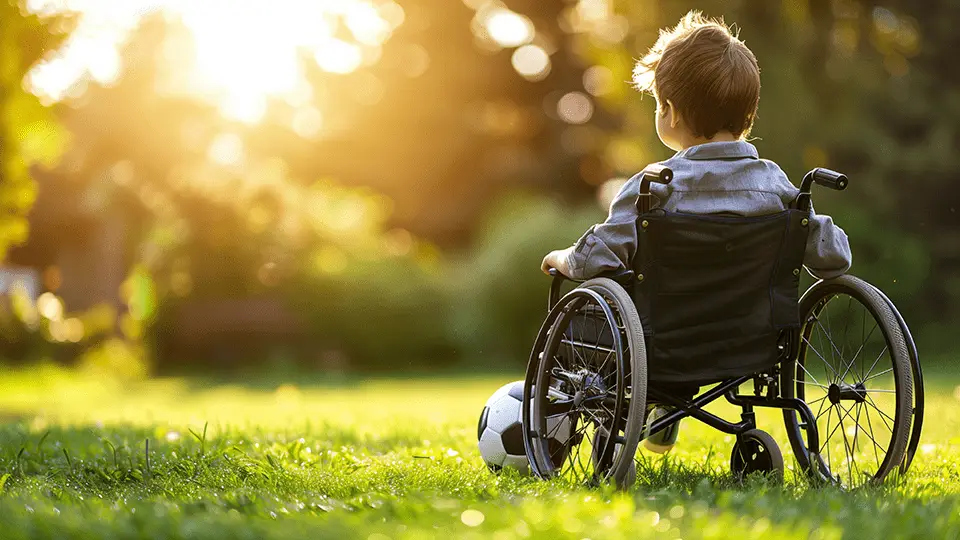
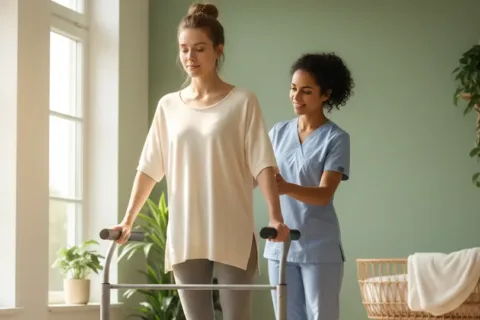


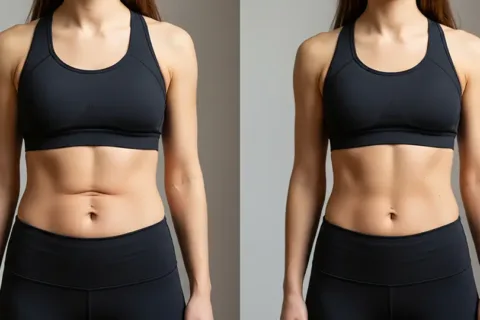

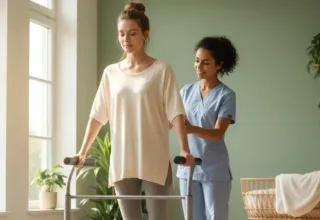
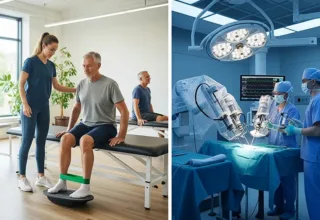


4 thoughts on “The Best Exercises for CP Child: 17 Expert-Backed Tips!”
Great blog you’ve got here.. It’s difficult to find excellent writing like yours these days. I seriously appreciate individuals like you! Take care!! http://www.kayswell.com
wonderful points altogether, you just received a new reader. What would you suggest about your put up that you simply made some days ago? Any positive?
If you want to increase your experience just keep visiting this site and be updated with the most up-to-date news update posted here.
It’s genuinely very difficult in this busy life to listen news on Television, so I just use world wide web for that reason, and take the most up-to-date news.